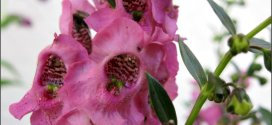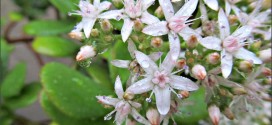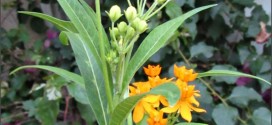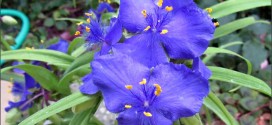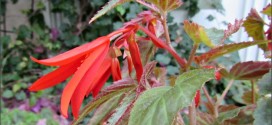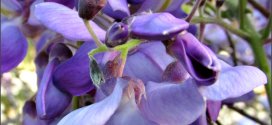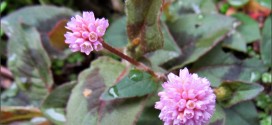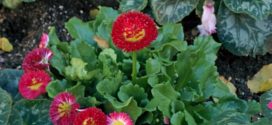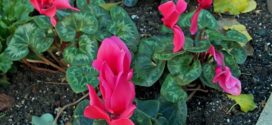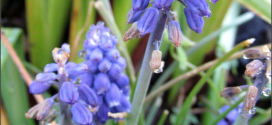Foxglove, Digitalis purpurea. This plant is attractive to bees, butterflies and/or birds. Average Water Needs; Water regularly; do not overwater. Self-sows freely; deadhead if you do not want volunteer seedlings next season. Other details: May be a noxious weed or invasive. The bad news is that foxglove (Digitalis purpurea) does not occur as a perennial. It is a biennial, meaning that …
Read More »Tag Archives: Toxic
Jade Plant in winter
During winter in Sunnyvale, the Jade plant is covered with white flowers. It’s is frequently visited by our resident hummingbird. Jade Plant (aka Jade Tree, Money Tree) is a great landscape plant for the Sunnyvale garden. It is a succulent that needs little watering. Jade plant is toxic to pets and can cause vomiting and a slow heart rate. In …
Read More »Asclepias – Silky Mix
One of over two hundred varieties of Asclepias, ‘Silky Mix’ stands out for its beautiful alternating deep red and gold colored blooms. Blooming mid Summer through early Fall, ‘Silky’, like most Asclepias prefers sunny, dry locations and does well in substandard soil. A tender perennial in some zones and annual in others, ‘Silky Mix’ is a beautiful addition to any …
Read More »Tradescantia x andersoniana ‘Sweet Kate’
‘Sweet Kate’ is a compact, clump-forming, hybrid spiderwort that is noted for its unique yellow foliage. It typically grows to 12” tall. Three-petaled, purplish-blue flowers (to 1.5” diameter) accented by contrasting yellow stamens are borne in terminal clusters (umbels) atop stiff stems. Numerous flower buds form in each cluster, but individual flowers open up only a few at a time, …
Read More »Begonia boliviens s. ‘Santa Cruz Sunset’
The Santa Cruz Sunset begonia has dramatic angled petals. These plants fall into the tropical and subtropical category of perennials, growing well in U.S. Department of Agriculture plant hardiness zones 6 through 11. Many varieties with ornamental leaves and blossoms grow well outside in USDA zones 10 and 11, while hardy begonias survive winters in USDA zones 6 through 9 …
Read More »Wisteria
Wisteria is a beautiful spring vine. Because of my visits to the California Spanish missions, I cannot think of Wisteria without thinking of California. Back in 2014, I planted my wisteria in probably the worst spot for it in my garden: a spot nestled in an east-facing corner that only gets a few hours of sunlight per day. All of …
Read More »Pink Knotweed
Pinkhead knotweed plants (Polygonum capitatum orPersicaria capitata) are considered excellent low-growing groundcover by some gardeners. They are also called invasive pests by others. If you read up on pink knotweed information, you’ll find that the plant is banned in England and considered invasive in California. This is because of its tendency to spread where it wasn’t invited. In our Sunnyvale garden …
Read More »English Daisy – Bellis perennis
English Daisies have long been popular for spring bedding, particularly in mild winter regions. Plants are biennial, usually lasting through one season, but self-seeding to provide future generations. This strain flowers well even in the first year, with little double button flowers of bright rose pink. Removing faded flowers regularly will keep plants blooming well into the summer. Often used …
Read More »Cyclamen – Latinia Salmon
Cyclamen is a great winter-flowering plant that loves light shade. You can grow in indoors or out. I am currently using them as a winter highlight in my former firepit. The red cyclamen is classic for the winter holidays. This salmon variety is also pretty. Strong stems bear vibrant, filly flowers well above attractive, silver-mottled leaves. In the summer, the …
Read More »Muscari – Grape Hyacinth
Grape Hyacinth is one of the first spring flowers and has a great fragrance. The first time you plant them should be in November. The plants naturalize (meaning that the next year’s flowers are the same). Severe poisoning from hyacinth or tulip poisoning is often seen when dogs dig up freshly planted bulbs or having access to a large bag …
Read More »